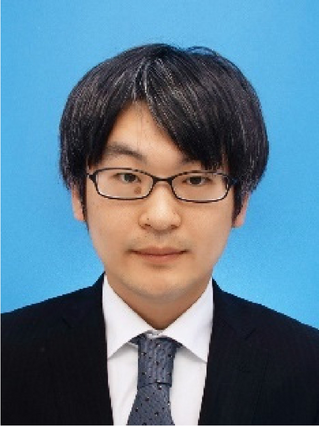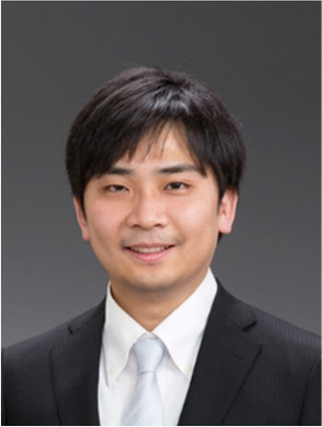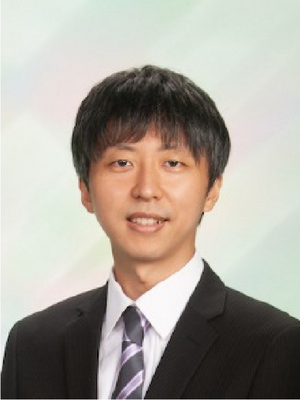1 The Physical Society of Japan (JPS): The 2023 AAPPS-JPS Award by JPS
In order to promote research in physics in our region, the Physical Society of Japan (JPS) and the Association of Asia Pacific Physical Societies (AAPPS) shall jointly award the “AAPPS-JPS Award” to young JPS members who achieve outstanding research results.
The citations of the 2023 winners of the first AAPPS-JPS Award are listed below.

Associate Professor Hiroaki Ishizuka
Department of Physics, Tokyo Institute of Technology
Theoretical study on the novel transport phenomena in topological magnets
Dr. Hiroaki Ishizuka has achieved remarkable accomplishments as a young researcher in the field of theoretical studies on the transport phenomena in magnetic semiconductors and magnetic metals. In particular, he has built a solid track record in theoretical research focusing on quantum effects and physical property explorations. In his research on skyrmion materials, he discovered that the fluctuations of magnetism and multiple magnetic scattering in transport phenomena lead to non-monotonic temperature dependence of anomalous Hall conductivity. Furthermore, he theoretically demonstrated that this mechanism generates an extremely large Hall current in the strong coupling limit. In his studies on non-collinear responses (phenomena exhibiting asymmetric current-voltage characteristics, similar to diodes), he discovered the occurrence of electric chiral magnetic effects due to magnetic scattering. Additionally, he clarified that this non-collinear response is closely related to the vector chirality of the magnetic moments. Utilizing the aforementioned theories of magnetic scattering, Dr. Ishizuka succeeded in reproducing the peculiar temperature and magnetic field dependencies reported in experiments on anomalous Hall effects and nonlinear responses in pristine magnetic metals. His research results shed light on the previously unexplained physics of transport properties in magnetic materials that were known experimentally but remained theoretically unclear, and they are expected to have a significant impact. Moreover, his work opened new perspectives in the design of functional magnetic materials for spintronics, with potential applications such as magnetic devices utilizing magnetic fluctuations and isolated skyrmions.

Assistant Professor Hiroki Nishibata
Department of Physics, Faculty of Science, Kyushu University
Exotic structures of neutron-rich nuclei revealed by beta-decay spectroscopy for spin-polarized radioactive nuclei
The study of unstable nuclei is important for the systematic understanding of the nucleon system. It is critical for understanding astronomical explosive phenomena and nucleosynthesis in the universe. Dr. Nishibata has developed a new spin-polarization method to study unstable nuclei.
Dr. Nishibata’s spin-polarizing method is versatile; it is applicable to a wide variety of nuclear species. Using the method, Dr. Nishibata has discovered new levels of unstable nuclei and determined their spin and parity. Further studies of unstable nuclei are expected.

Planning Officer Koji Michishio
Research Planning Office, National Metrology Institute of Japan, National Institute of Advanced Industrial Science and Technology
Spectroscopy of positronium negative ions and its applied research
Positronium is a bound state of an electron and its antimatter counterpart, the positron, which further binds to another electron to form the positronium negative ion, which is one of the simplest three-body systems. Since this bound state is a three-body system and does not contain perturbations due to strong interactions, it is possible to perform highly accurate theoretical calculations using quantum electrodynamics. It is possible to search for new quantum phenomena through comparisons with experiments.
Dr. Michishio pioneered positronium negative ion research as a particle-antiparticle bound state and has been working on both basic and applied research. In his basic research, he first discovered an efficient method for generating positronium negative ions using a Na-coated tungsten surface. Next, a pulsed beam of positronium negative ions was produced by this generation method, and a cross-beam arrangement was developed to synchronize it temporally and spatially with a nanosecond pulsed infrared laser beam. Using this spectroscopic apparatus, he succeeded in observing photo-electron detachment and shape resonance for the first time. Furthermore, he found that the measured ground-state and shape resonance parameters and the electron affinity of positronium agree with the state-of-the-art three-body-system theoretical calculations. As applied research, he made it possible to generate a monochromatic positronium beam. He first created a pulsed beam of positronium negative ions, then accelerated it in an electric field, irradiated it with a laser beam, and desorbed it, thereby devising a method to obtain a monochromatic positronium beam. In an experiment, he succeeded in generating a single-energy positronium beam of up to 1.9 keV in an ultra-high vacuum. This result is expected to be applied not only to basic research but also to condensed matter physics.
Cooporative Researcher Yuto Minami
Accenture Japan Ltd., Data Science Consultant, Research Center for Nuclear Physics, Osaka University
Observation of Cosmic Birefringence in the Cosmic Microwave Background Polarization
The cosmic microwave background (CMB) may receive unknown effects from physics beyond the Standard Model and rotate its polarization plane before the photons are observed, as the photons have propagated since they were generated shortly after the Big Bang. A specific type of polarization change is called the cosmic birefringence. In order to measure its effect, one must subtract the effect of the rotation of the detector itself. Dr. Minami’s contribution is the development of a new method to perform this subtraction by measuring microwaves originating in the Milky Way at the same time as the CMB. The method is appreciated highly as it will become a basis for future CMB measurements.

Associate Professor Hayato Motohashi
Division of Liberal Arts, Center for Promotion of Higher Education, Kogakuin University
Construction of consistent scalar-tensor theories and exploration of new gravitational phenomena
Dr. Hayato Motohashi has made important theoretical contributions to the field of extended gravity theory. He investigated the conditions under which extended scalar-tensor theories have solutions to the Einstein equations as exact solutions, where the scalar field has a non-trivial profile with a constant kinetic term. Dr. Motohashi showed that such solutions, called stealth solutions, are generally strongly coupled and are inappropriate as models to explain reality without further modifications. Consequently, he has also shown that by introducing higher order derivative interactions, the issue of the strong coupling can be safely solved without introducing ghosts, which cause problematic quantum instabilities at low energy scales. Dr. Motohashi has also had achievements covering a wide range of research, including studies of extended theories of gravity and the analysis of inflationary universe models.

